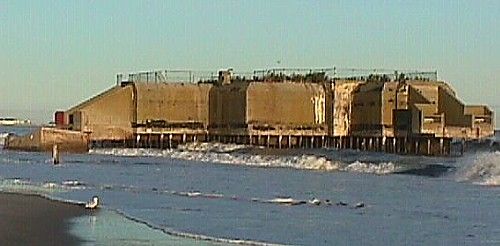2008.01.31 14:41
the architecture of war
To: architecthetics
Subject: Baroque beginnings?
Date: 2000.10.26
Alex asks:
To repeat a previous question: who designed the Baroque? OR How did the Baroque arise (emerge)? Any takers?
Steve offers:
I think Michelangelo’s architecture (which was more or less a product of his late life) manifested tremendous ‘new’ inspiration for 17th century architecture. The details of the Porta Pia and the wholly integrated articulation of the Sforza Chapel offer architectures completely unprecedented until that time, which in turn inspired new architectures. Likewise, the ‘undulating’ wall of St. Peter’s no doubt became the new paradigm, especially considering that St. Peter’s then (as now?) represented the ultimate place of worship. In simple terms, it is best to learn from the best.
To this day, I am intrigued by Michelangelo’s fortification designs for Florence (recorded as plan drawings). They exhibit many proto-Baroque flourishes, and it is interesting to note the military connection (vis-à-vis ‘war and architecture’).
This places Michelangelo’s fortification projects among the incunabula of modern military architecture, just at the most fluid and inventive moment in its history, at a time when experience had established no proven formula of design. Unlike the situation in other arts, the lessons of antiquity and of preceding generations were of little account; this is one of those rare events in the history of architecture when technological advances altered the basic precepts of design.
--James Ackerman, The Architecture of Michelangelo (Penguin, 1970), p. 127.
postscript:
Alex also asks:
...is architecture the product of Man (singular, intentional) or of men (plural and impartial)?
Steve replies:
I see architecture as the product of human imagination(s), and that is why I spend my time trying to figure out where human imagination comes from.
QBVS2, pp.24-25.
2008.01.31 14:22
the architecture of war
Yes, human nature.
According to The Bible, the first human death was a murder.
2008.01.31 13:02
the architecture of war
War and peace at the southern-most tip of New Jersey.

My elderly next door neighbor was in the homefront Navy during WWII, and tells of German U-Boats regularly off the New Jersey coast. Apparently, some German sailors bought bread in Atlantic City--among the debris from a hit German submarine somewhere in the Atlantic were wrappings of American bought bread.

pilotis wo bist du?
| |
2008.01.31 12:42
who wants to poche?
|